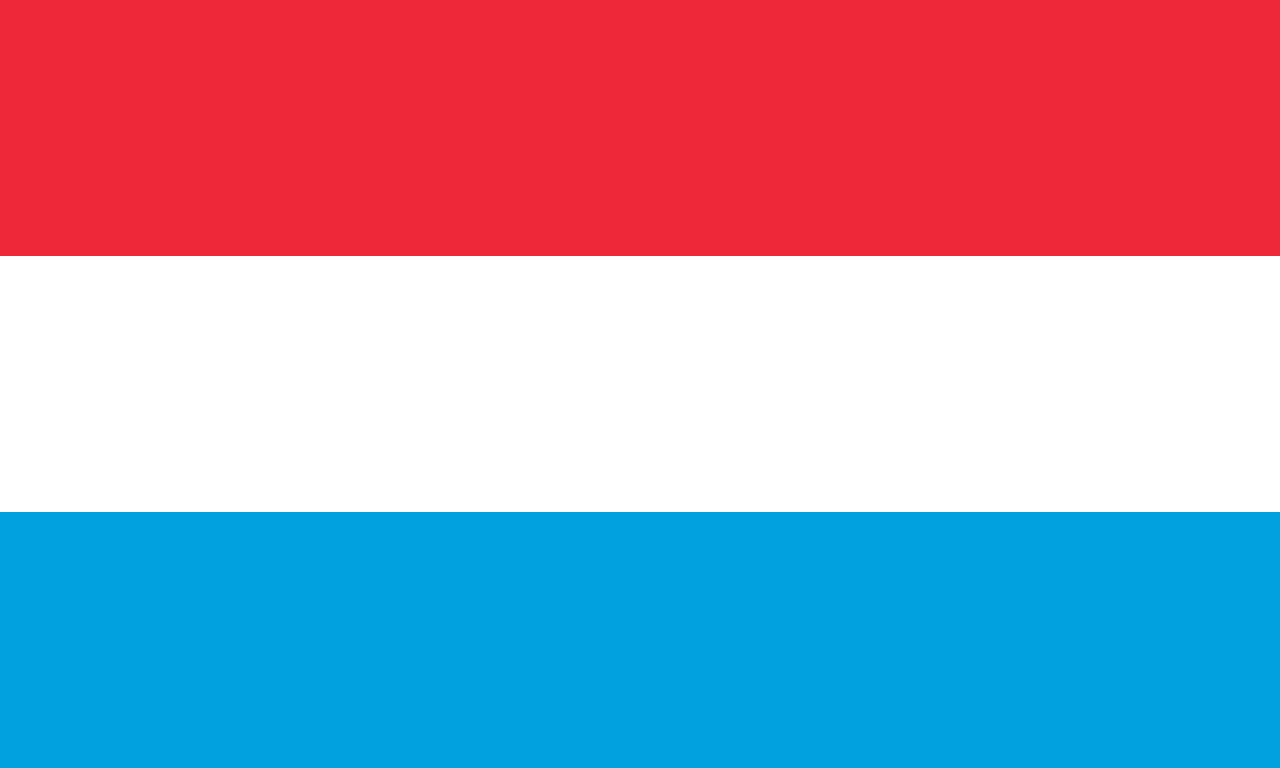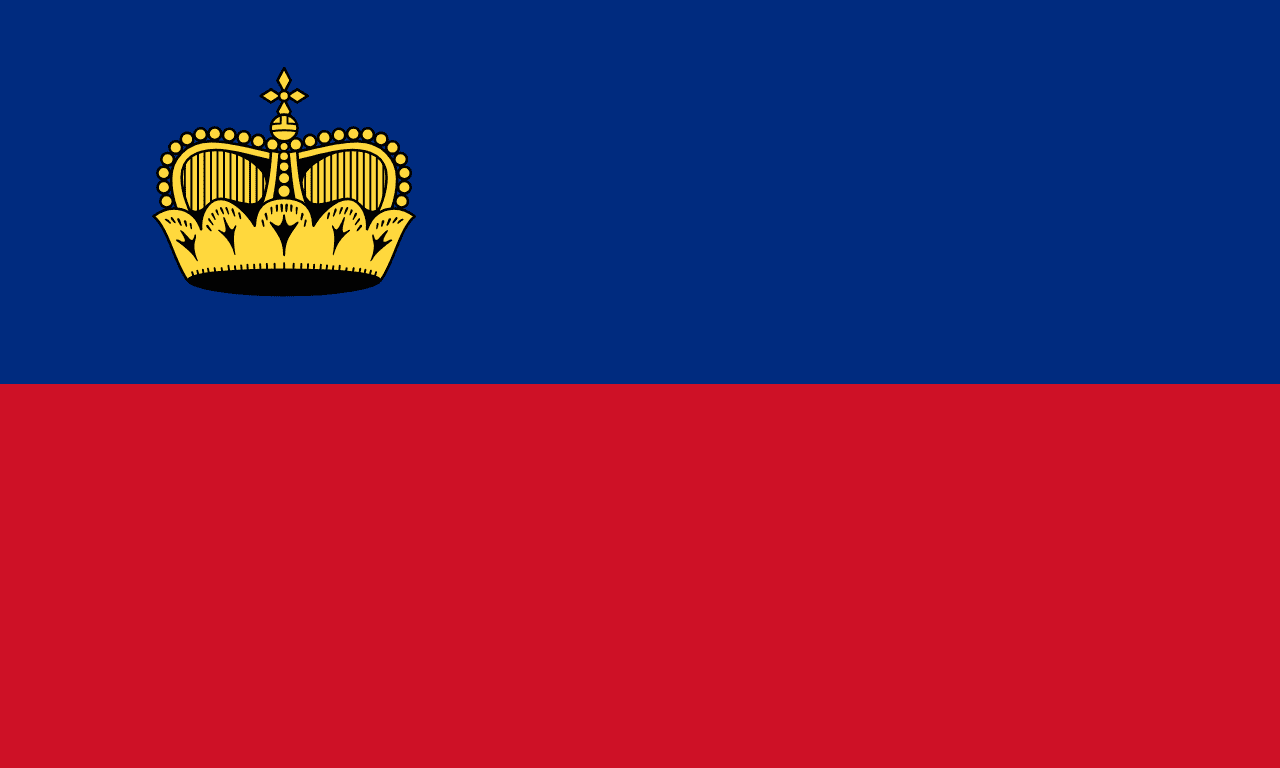Luxembourg Flag Meaning
Three horizontal stripes of red, white, and light blue representing the Grand Duchy of Luxembourg, one of Europe's smallest but wealthiest nations and a founding member of the European Union.
- Continent
- Europe
- Adopted
- 1972
- Ratio
- 3:5
- Colors
- red, white, blue

Symbolism
Red Stripe: Represents the strength, courage, and determination of the Luxembourgish people, as well as their historical struggles for independence and sovereignty as a small nation surrounded by larger powers.
White Stripe: Symbolizes peace, purity, and the desire for harmony both within Luxembourg and with its neighboring countries. Also represents the snow that covers Luxembourg's Ardennes region in winter.
Light Blue Stripe: Represents the clear skies over Luxembourg and the hope for a bright future. The specific light blue shade distinguishes Luxembourg's flag from the similar Dutch flag, which uses dark blue.
Tricolor Tradition: The horizontal tricolor design reflects Luxembourg's position in Western Europe and its historical connections to both French and Germanic cultural traditions.
Grand Ducal Heritage: The colors represent the constitutional monarchy system where Luxembourg is one of the world's few remaining Grand Duchies, balancing tradition with modern democratic governance.
History
- 963-1354: The County and later Duchy of Luxembourg was established, becoming one of the most powerful territories in medieval Europe under the House of Luxembourg, which produced four Holy Roman Emperors.
- 1815-1890: Luxembourg was in personal union with the Netherlands under the House of Orange-Nassau, using Dutch-influenced symbols while developing its own distinct identity.
- 1845: Luxembourg began using a tricolor flag similar to the Dutch flag but with lighter blue, establishing the basic design that would eventually become the official national flag.
- 1890: Luxembourg gained full independence when the personal union with the Netherlands ended, leading to greater development of distinct national symbols and cultural identity.
- 1940-1944: During Nazi occupation, the Luxembourg flag was banned, but resistance fighters and the government-in-exile continued to use it as a symbol of national identity and hope for liberation.
- August 16, 1972: The flag was officially codified in law, formally establishing the specifications and confirming the light blue color that distinguishes it from the Netherlands flag.
- 1957-Present: As a founding member of the European Economic Community (now EU), Luxembourg's flag has gained prominence in European integration while maintaining national distinctiveness.
Trivia
- Luxembourg's flag is often confused with the Netherlands flag, but Luxembourg uses a lighter shade of blue (sky blue) while the Netherlands uses dark blue.
- Luxembourg is one of only three remaining Grand Duchies in the world (along with historical claims), making its flag represent a rare form of constitutional monarchy.
- The flag represents the world's second-richest country by GDP per capita, reflecting Luxembourg's success as a financial center and EU headquarters location.
- Luxembourg is trilingual (Luxembourgish, French, German), and the flag represents this unique multilingual European identity within a single small nation.
- The flag appears on euro banknotes and coins, as Luxembourg was a founding member of the eurozone and the European Central Bank has significant operations there.
- Despite being one of Europe's smallest countries (2,586 sq km), Luxembourg's flag appears at major international meetings due to its outsized diplomatic and economic influence.
- The flag represents the only country in the world where Luxembourgish is the national language, though French and German are also official languages.
- Luxembourg City serves as one of the three unofficial capitals of the European Union, and the flag appears prominently at EU institutions housed there.
- The flag appears on vehicles of the European Investment Bank, which is headquartered in Luxembourg and is the EU's lending institution.
- Luxembourg's flag protocol requires it to be displayed alongside the EU flag on government buildings, symbolizing the country's deep commitment to European integration.
- The Grand Duke of Luxembourg is the world's only reigning Grand Duke, making the flag unique in representing this specific noble title and constitutional role.
- The flag represents a country where over 47% of residents are foreign nationals, making Luxembourg one of the most internationally diverse countries in Europe.
- Luxembourg was a founding member of NATO, Benelux, and the European Coal and Steel Community, and the flag symbolizes this commitment to international cooperation.
- The flag appears prominently during National Day celebrations on June 23, which honors the official birthday of the Grand Duke and celebrates Luxembourg's sovereignty.
- Luxembourg's steel industry historically drove its economy, and the flag appears at ArcelorMittal headquarters, as the company originated from Luxembourg's steel heritage.
Related Countries

Belgium
Europe
Three vertical stripes of black, yellow, and red derived from the coat of arms of the Duchy of Brabant, adopted during Belgium's independence revolution and representing the nation's determination, generosity, and sacrifice.

Netherlands
Europe
A horizontal tricolor of red, white, and blue, the oldest tricolor still in use today. It originated in the 16th century during the Dutch Revolt against Spain.

Germany
Europe
Three horizontal stripes of black, red, and gold representing the democratic traditions of Germany, with colors rooted in the 19th-century liberal movement and symbolizing unity, justice, and freedom in the modern Federal Republic.

Switzerland
Europe
A red square field with a white Greek cross in the center, representing the Christian faith that united the early Swiss cantons and the blood shed in defense of freedom, with origins dating back to the Holy Roman Empire and medieval Swiss military banners.

Liechtenstein
Europe
Two horizontal stripes of blue and red with a golden crown in the upper left corner, representing this Alpine principality that is one of the world's smallest and wealthiest nations.

France
Europe
Revolutionary tricolor symbolizing liberty, equality, and fraternity.